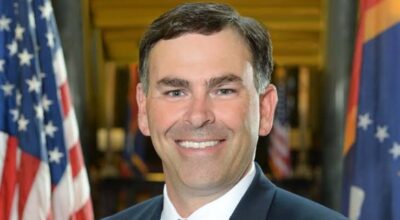Greenland’s warming may provide opportunity
Published 4:15 pm Thursday, September 19, 2019
By John Nelson
Guest Columnist
I’ve long had a fascination with Greenland, that large, isolated island in the northern latitudes that is often used today as a barometer for climate change.
My interest began in grade school when introduced to that colorful character known as Erik the Red. After being booted out of Iceland for murder, Erik loaded up his family and livestock and sailed for a location on the island that he had previously visited.
Then in a stroke of genius that earned him a place among history’s great real estate promoters, he called this barren landscape Greenland to attract more settlers to his colony.
In the mid-70’s, I had the opportunity to make several voyages up the western coast of Greenland. That experience left me with memories of orange-colored fishing boats contrasted against an icy coastline and of brightly-painted houses in the small villages.
My most vivid memory is of the dangerous passage through icebergs – a story I shared with readers in a column written last year.
Those voyages also renewed my interest in the story of the hardy, Norse settlers who had gone there with Erik the Red. My research revealed that ole Erik was as lucky as he was colorful for his settlement began during a warming trend.
That time when temperatures were on the rise is most often referred to as the Medieval Warm Period (MWP). There are no definite dates for this period, but it is often defined as being from around 950 to 1250.
The Greenland colony began in 982 and rode the crest of rising temperatures for over 300 years till the population increased to more than 3,000. Farms were productive enough to feed the inhabitants and provide fodder for herds of cattle and swine.
Then around 1300, the climate began to change again with the beginning of what is known as the Little Ice Age. Average temperatures slowly declined till the Greenlanders had to either adopt the culture of the native Inuits or evacuate. The few that remained sailed back to Iceland leaving Greenland without European inhabitants till the 1700’s.
It’s ironic that the recent flap over our President’s offer to purchase Greenland from Denmark made me think about the island again – Ironic since Trump will be remembered as being as colorful as Erik the Red and as a savvy real estate promoter himself.
There was no internet when I researched the story back in the 70’s, but it now provides a quick way to see what is being said about the Nordic colonists. I was quite surprised when the first site I visited suggested that there had been no temperature changes during the time of the settlement – a theory completely different from what I had previously read, and one that frankly makes no sense.
Further research on the net made me aware that in some quarters the validity of MWP is under assault. It’s being explained as either a misinterpretation of data or as elevated temperatures that occurred in very limited geographical areas.
It seems that any evidence that southern Greenland and all of Europe were as warm a thousand years ago as they are today is to some climatologists what Al Gore might refer to as an inconvenient truth.
The greatest obstacle to those attempting to debunk the MWP is recored history. Climate data was certainly not recorded as throughly then as it is today, but countless diaries and church and town records document this period when warmer temperatures led to greater agricultural yields and the population soared.
I’m not suggesting that the greenhouse effect from the burning of fossil fuels plays no role in current climate change. But considering the climate changes that our planet has experienced in the past, there must be a lot of factors at play – some we probably don’t yet understand.
But getting back to Greenland, regardless of why it’s happening or how many times it might have previously happened, all agree that the island is getting warmer. And that provides opportunity for development.
I’ve just looked at an aerial view of Qassiarsuk where Erik the Red established his colony. Looks to me like a great location for a Trump tower. If he hurries, it could be completed in time to accommodate the first wave of arctic tourist




